Fighting Back Against Lubricant Contaminants
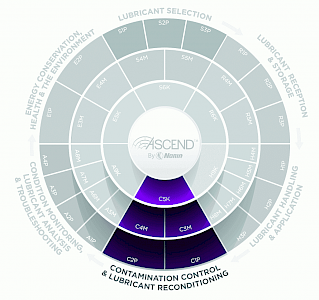 Contamination control and lubricant reconditioning are one of the most important lifecycle stages on the Ascend Chart. Contaminant exclusion and removal are somewhat obvious when it comes to extending the life of the lubricant and machine, but this part of the chart should be looked at as an in-depth guide to contamination control. Starting with the Platform level and working inward accomplishing tasks and goals throughout each factor increases the performance of the lubrication, assets and even personnel within the facility. Let’s jump right into the three levels of contamination control and get a good overview of how this lifecycle stage progresses through the ascend chart.
Contamination control and lubricant reconditioning are one of the most important lifecycle stages on the Ascend Chart. Contaminant exclusion and removal are somewhat obvious when it comes to extending the life of the lubricant and machine, but this part of the chart should be looked at as an in-depth guide to contamination control. Starting with the Platform level and working inward accomplishing tasks and goals throughout each factor increases the performance of the lubrication, assets and even personnel within the facility. Let’s jump right into the three levels of contamination control and get a good overview of how this lifecycle stage progresses through the ascend chart.
The Platform Level: Contaminant Exclusion and Removal
The outermost ring is called the Platform level. This level is considered the foundation of the contaminant control section. These two factors are the low-hanging fruit or first-step actions that should be taken when building a lubrication program. The first factor, (C1P) Contamination Exclusion, is crucial to the longevity of a lubricant. Keeping contaminants out of the lubricant may at times be more challenging, depending on the environment of the asset. There could be steam or spray nearby, it could be a humid coastal environment or an extremely hot or cold environment. All of these conditions can allow contaminants to enter the lubricant in one way or another. One of the first actions should be to review the current documentation and procedures. This includes the proper steps on topping up lubricants, initially filling new equipment and implementing hardware such as desiccant breathers and quick-connects at the fill and drain ports. If the facility is unable to install hardware due to scheduling a shutdown or personnel workload, the next alternative should be to at least use dedicated sealable and refillable containers or use disposable funnels to top-up or fill your machines. Contaminant exclusion really means taking the steps necessary to prevent contaminant ingression. As stated in a Machinery Lubrication article by Jim Fitch, “the cost of excluding a gram of dirt is probably only about 10 per cent of what it will cost you once it gets into your oil.” When some contaminants do make it into the lubricant, which will happen because no program is perfect, the facility will need to consider the next Factor of this life-cycle stage, (C2P) Contamination Removal.
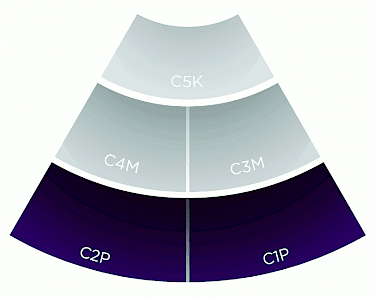 The purpose of contamination removal is to remove contaminants as quickly as they enter the machine. Now, removing contaminants can be tricky if the proper equipment isn’t utilized. The point is not only to extract the current contaminants from the lubricant but also to keep new contaminants from entering the reservoir or sump during the process of removal. This factor directly compliments contaminant exclusion to provide balance in the program and increase the life of the lubricant. This may require the use of a mobile filtration unit such as a filter cart, or even a stationary filtration unit on critical or large oiled assets. Also, implementing lubricant cleanliness standards will guide operators on how clean the lubricant must be, the frequency of periodic filtration and establishing a baseline of facility lubricant cleanliness for future reference. Most OEM machines either don’t have filtration or the current filter isn’t capable of reaching the cleanliness standards required by the facility. At this point, it is best to assess the current filtration efficiency, add new or additional filtration devices or review and change the target particle size of the cleanliness standard. Once a facility has implemented new strategies of contamination exclusion and removal, it is time to start looking into the next factors at the Management level.
The purpose of contamination removal is to remove contaminants as quickly as they enter the machine. Now, removing contaminants can be tricky if the proper equipment isn’t utilized. The point is not only to extract the current contaminants from the lubricant but also to keep new contaminants from entering the reservoir or sump during the process of removal. This factor directly compliments contaminant exclusion to provide balance in the program and increase the life of the lubricant. This may require the use of a mobile filtration unit such as a filter cart, or even a stationary filtration unit on critical or large oiled assets. Also, implementing lubricant cleanliness standards will guide operators on how clean the lubricant must be, the frequency of periodic filtration and establishing a baseline of facility lubricant cleanliness for future reference. Most OEM machines either don’t have filtration or the current filter isn’t capable of reaching the cleanliness standards required by the facility. At this point, it is best to assess the current filtration efficiency, add new or additional filtration devices or review and change the target particle size of the cleanliness standard. Once a facility has implemented new strategies of contamination exclusion and removal, it is time to start looking into the next factors at the Management level.
The Management Level: Contamination Control Objectives and Training
The middle ring, known as the Management level, contains factors that enable personnel to manage processes, resources, scheduling and monitoring of lubrication tasks. These factors are everyday activities and are based on the performance of the factors at the Platform level. This level is truly about managing a contamination control program, establishing sustainable contamination control objectives and ensuring the core training for contamination control is provided.
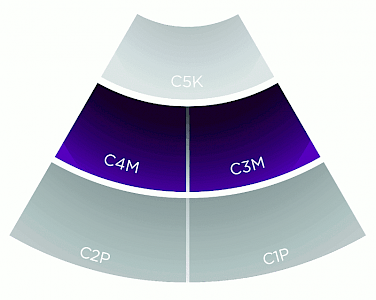 Contaminant Control Objectives (C3M) should be set consistent with facility reliability objectives, machine criticality, fluid environmental severity and the sensitivity of critical components to specific contaminants. When talking about machine reliability, lubrication should be among the first considerations to come to mind. If the contaminant control objectives aren’t synonymous with the plants reliability objectives, therein lies the first problem. Reliable machines start with having reliable lubricants. Lubricants are much more reliable when they are kept clean, cool and dry. Secondly, understanding the machine’s specific criticality is key. The higher the criticality, the more goals or standards the plant should set for contamination control for that specific machine. Monitoring machine component life extension is a practical way to estimate the benefits of a contamination control program. Ultimately, this can help justify the investment in machinery redesign, the actions required to proactively control the entry of contaminants and the installation and maintenance of the removal mechanisms.
Contaminant Control Objectives (C3M) should be set consistent with facility reliability objectives, machine criticality, fluid environmental severity and the sensitivity of critical components to specific contaminants. When talking about machine reliability, lubrication should be among the first considerations to come to mind. If the contaminant control objectives aren’t synonymous with the plants reliability objectives, therein lies the first problem. Reliable machines start with having reliable lubricants. Lubricants are much more reliable when they are kept clean, cool and dry. Secondly, understanding the machine’s specific criticality is key. The higher the criticality, the more goals or standards the plant should set for contamination control for that specific machine. Monitoring machine component life extension is a practical way to estimate the benefits of a contamination control program. Ultimately, this can help justify the investment in machinery redesign, the actions required to proactively control the entry of contaminants and the installation and maintenance of the removal mechanisms.
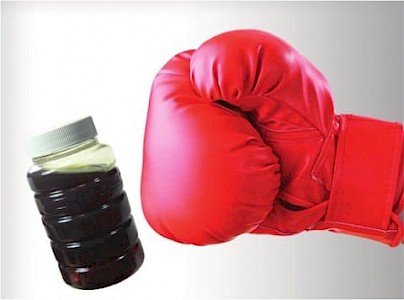 The next factor on the journey to reaching lubrication excellence at a facility is Contamination Control Training (C4M). This will require a change in the way the technicians view the importance of contamination and the impact it has on their machines. We all know lubrication technicians or maintenance technicians who have done things a certain way for a very long time and maybe stuck in their old ways. Training is a subtle way to open the eyes of everyone who attends and create a shared awareness of the need for change. With respect to the traditional way of doing things, training is important not only to the technicians but for the operators and other supporting roles within the facility. Proper training is an essential ingredient when changing the culture of the program and facility as a whole. Something that a lot of facilities talk about is getting their techs to “buyin” to a new lubrication program and a new way of operating the facility. Training can be a great way to expose the incredible benefits of a great lubrication program. Not only to teach but to explain why some tasks that may seem insignificant or tedious can actually make everyone’s job a little easier in the long run. If the plant can keep contaminants out of their machines, the machines will last longer and perform better. Procedures, objectives and training can be tough changes and we all know that change doesn’t happen overnight. While there may be some successes early on, the biggest benefits come from years of sustained change. For contamination control to stay sustainable, the final level dives into key performance indicators.
The next factor on the journey to reaching lubrication excellence at a facility is Contamination Control Training (C4M). This will require a change in the way the technicians view the importance of contamination and the impact it has on their machines. We all know lubrication technicians or maintenance technicians who have done things a certain way for a very long time and maybe stuck in their old ways. Training is a subtle way to open the eyes of everyone who attends and create a shared awareness of the need for change. With respect to the traditional way of doing things, training is important not only to the technicians but for the operators and other supporting roles within the facility. Proper training is an essential ingredient when changing the culture of the program and facility as a whole. Something that a lot of facilities talk about is getting their techs to “buyin” to a new lubrication program and a new way of operating the facility. Training can be a great way to expose the incredible benefits of a great lubrication program. Not only to teach but to explain why some tasks that may seem insignificant or tedious can actually make everyone’s job a little easier in the long run. If the plant can keep contaminants out of their machines, the machines will last longer and perform better. Procedures, objectives and training can be tough changes and we all know that change doesn’t happen overnight. While there may be some successes early on, the biggest benefits come from years of sustained change. For contamination control to stay sustainable, the final level dives into key performance indicators.
The Key Performance Indicators Level: Contamination Control KPIs
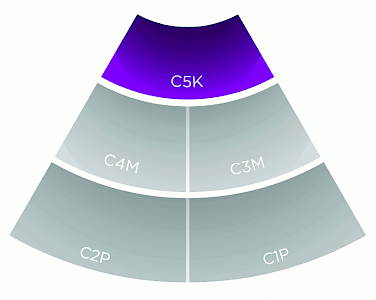 Key Performance Indicators (KIP) are used to identify certain areas or objectives that require attention and estimate the benefits of implementing a strategy to achieve machine life extension and its associated economic value. These KPIs are focused on the effectiveness of contamination control implementation and overall sustainability. When considering a lubrication program as a whole on the path to lubrication excellence, this would be one of the top metrics to assess overall success. At this level, the program should be in full swing and operating smoothly. These indicators should also include a measure of the compliance of contamination control training and education in the facility.
Key Performance Indicators (KIP) are used to identify certain areas or objectives that require attention and estimate the benefits of implementing a strategy to achieve machine life extension and its associated economic value. These KPIs are focused on the effectiveness of contamination control implementation and overall sustainability. When considering a lubrication program as a whole on the path to lubrication excellence, this would be one of the top metrics to assess overall success. At this level, the program should be in full swing and operating smoothly. These indicators should also include a measure of the compliance of contamination control training and education in the facility.
Contamination control is one of the most important lifecycle stages on the Ascend chart. Combining resources and implementing various procedures, hardware and objectives to achieve all three levels of this lifecycle stage can be a daunting task, but with the right technicians and the right attitude, world-class lubrication excellence is within your facility’s grasp.
